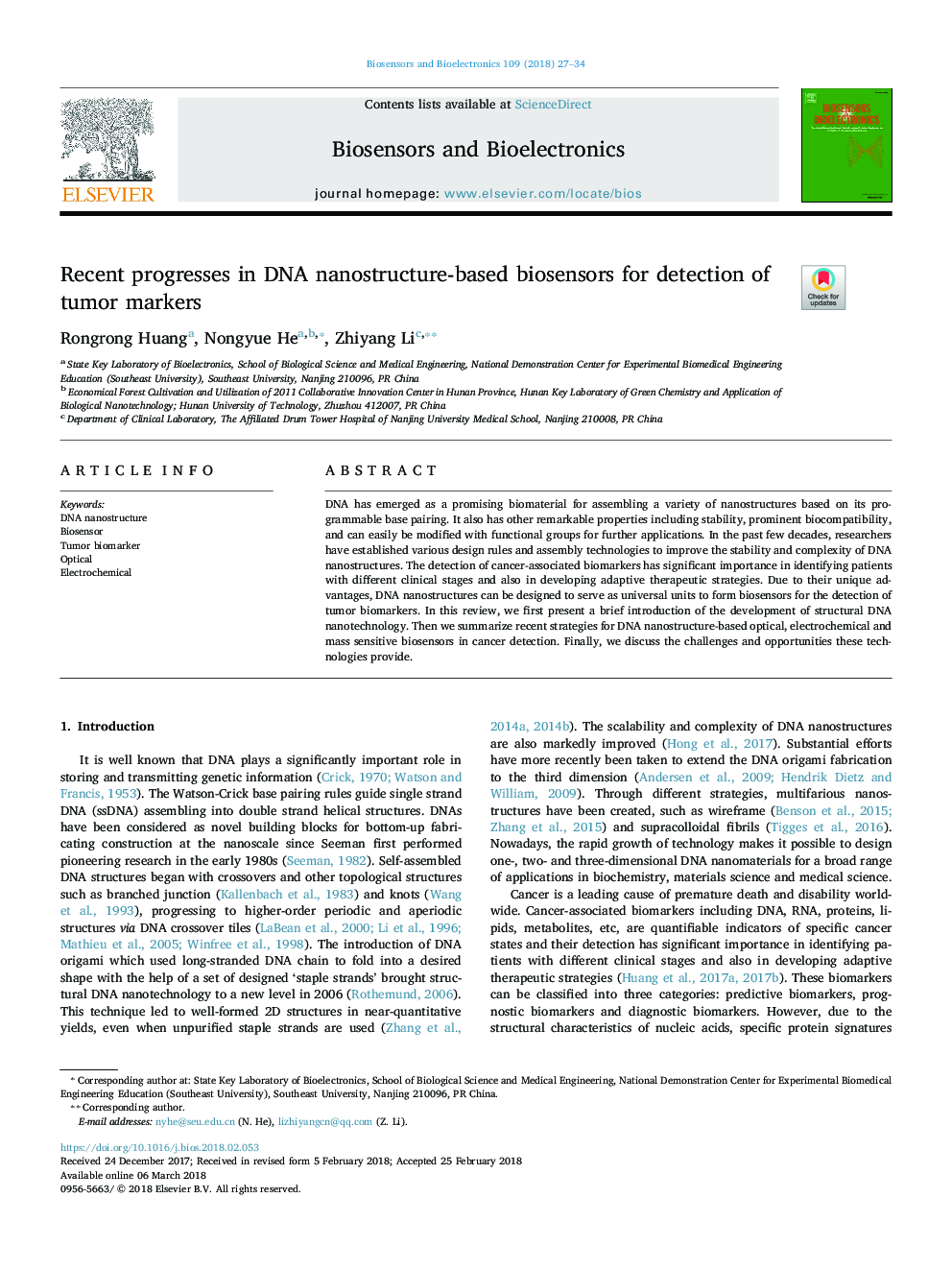| Article ID | Journal | Published Year | Pages | File Type |
|---|---|---|---|---|
| 7229459 | Biosensors and Bioelectronics | 2018 | 8 Pages |
Abstract
DNA has emerged as a promising biomaterial for assembling a variety of nanostructures based on its programmable base pairing. It also has other remarkable properties including stability, prominent biocompatibility, and can easily be modified with functional groups for further applications. In the past few decades, researchers have established various design rules and assembly technologies to improve the stability and complexity of DNA nanostructures. The detection of cancer-associated biomarkers has significant importance in identifying patients with different clinical stages and also in developing adaptive therapeutic strategies. Due to their unique advantages, DNA nanostructures can be designed to serve as universal units to form biosensors for the detection of tumor biomarkers. In this review, we first present a brief introduction of the development of structural DNA nanotechnology. Then we summarize recent strategies for DNA nanostructure-based optical, electrochemical and mass sensitive biosensors in cancer detection. Finally, we discuss the challenges and opportunities these technologies provide.
Related Topics
Physical Sciences and Engineering
Chemistry
Analytical Chemistry
Authors
Rongrong Huang, Nongyue He, Zhiyang Li,
